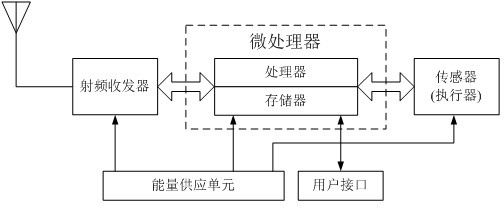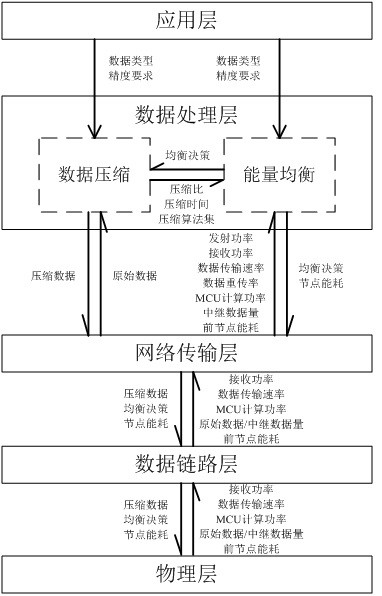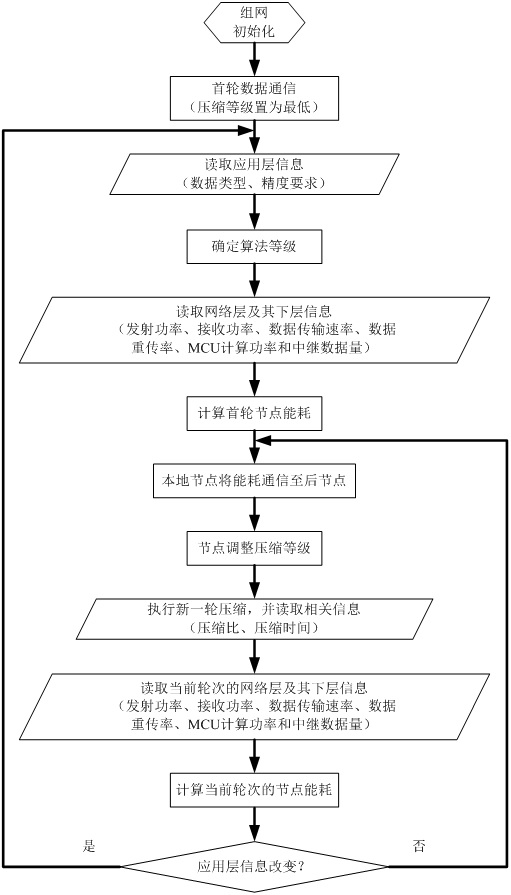Energy-equalized workflow
A technology of energy balance and workflow, which is applied in the field of Internet of Things, can solve the problems of energy consumption imbalance, reduce network life, and not be solved well, so as to achieve energy saving and balance, and prolong network life. Effect
- Summary
- Abstract
- Description
- Claims
- Application Information
AI Technical Summary
Problems solved by technology
Method used
Image
Examples
Embodiment Construction
[0038] The present invention is described in further detail below:
[0039] In the energy balance method of the wireless sensor network of the present invention, the serial number of the local node is denoted as i , then relative to the local node, the number of the previous node is recorded as i -1, the number of the subsequent node is recorded as i +1, i is a natural number greater than or equal to 1, and the node closest to the sink node is numbered i =1 node,
[0040] For except numbered as i For nodes other than the node with =1, if there is any previous communication, the next communication will adjust its own algorithm level based on the energy consumption of the previous communication, namely:
[0041] If the energy consumption of the previous node in the current round of communication is greater than the energy consumption of the local node, the algorithm level of the local node will be increased by one level for the next communication execution until it is adjus...
PUM
 Login to View More
Login to View More Abstract
Description
Claims
Application Information
 Login to View More
Login to View More - Generate Ideas
- Intellectual Property
- Life Sciences
- Materials
- Tech Scout
- Unparalleled Data Quality
- Higher Quality Content
- 60% Fewer Hallucinations
Browse by: Latest US Patents, China's latest patents, Technical Efficacy Thesaurus, Application Domain, Technology Topic, Popular Technical Reports.
© 2025 PatSnap. All rights reserved.Legal|Privacy policy|Modern Slavery Act Transparency Statement|Sitemap|About US| Contact US: help@patsnap.com



